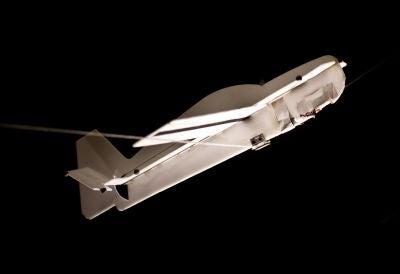Your support helps us to tell the story
From reproductive rights to climate change to Big Tech, The Independent is on the ground when the story is developing. Whether it's investigating the financials of Elon Musk's pro-Trump PAC or producing our latest documentary, 'The A Word', which shines a light on the American women fighting for reproductive rights, we know how important it is to parse out the facts from the messaging.
At such a critical moment in US history, we need reporters on the ground. Your donation allows us to keep sending journalists to speak to both sides of the story.
The Independent is trusted by Americans across the entire political spectrum. And unlike many other quality news outlets, we choose not to lock Americans out of our reporting and analysis with paywalls. We believe quality journalism should be available to everyone, paid for by those who can afford it.
Your support makes all the difference.In the late 19th century, the Wright Brothers were carefully observing birds in their hunt for a way to make humans fly - and over a century later, a team of scientists at MIT are doing the same thing to help create the next generation of planes.
The question researchers Russ Tedrake and Rick Cory wanted to answer is fairly simple in itself - why do landing aircraft need a long descent, precise approach pattern and a lengthy runway to brake on, when birds can simply switch from full speed flight to touching down on a rooftop or overhead cable instantly?
The answer turned out to be far more complicated, but the pair have managed to create a foam glider that can land on a perch, much like a pet parakeet, an invention that could have important implications for the next generation of aircraft.
Tedrake and Cory successfully replicated a "stall," one of the most complex aspects of bird flight during which a bird will tilt its wings at a sharp angle, creating a whirlwind behind the wing and enough drag to land on a pinhead.
By creating the mathematical model of the maneuver, the pair were able to program a series of trajectories through which it could be performed, before finally creating a series of "funnels" that could guide the glider into one of the trajectories before stalling it and bringing it to the exact resting place.
The system design earned PhD student Rick Cory Boeing's 2010 Engineering Student of the Year Award and has attracted the attention of the US military, which is interested in the possibilities of unmanned vehicles that can land in confined spaces.
And while the glider's landing doesn't look as if it would be comfortable for passengers, the implications of being able to do this with full size aircraft are interesting - imagine, for instance, a fleet of electronic planes capable of staying in the sky thanks to electric charging "perches."
Cory hopes to continue his research, despite taking a job with Disney, which he says "wants a flying Tinker Bell that can land on a lantern" - so don't be surprised if the flight of fairies improves before the flight of humans.
Find out more about the research here: http://groups.csail.mit.edu/locomotion/perching.html
See an eagle "stall" and land: http://www.youtube.com/watch?v=LA6XSrM0V_0
See the glider stall and land: http://web.mit.edu/press/2010/perching-plane
Think you've got an aviation idea that could change the world? Airbus recently launched a global competition called Fly Your Ideas (FYI), challenging students worldwide to develop new ideas for a greener aviation industry. The top prize is €30,000 and teams must be registered by November 30, 2010 - find out more at http://www.airbus-fyi.com

Join our commenting forum
Join thought-provoking conversations, follow other Independent readers and see their replies
Comments